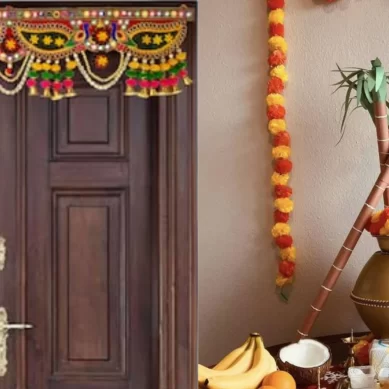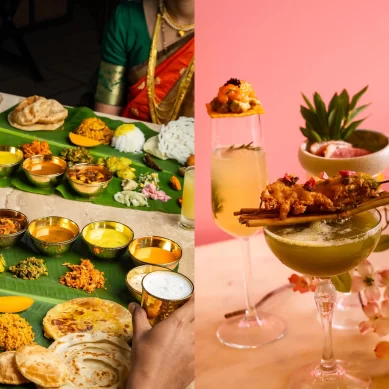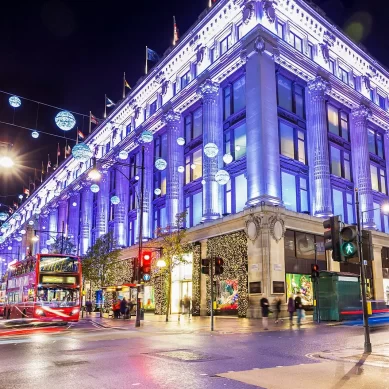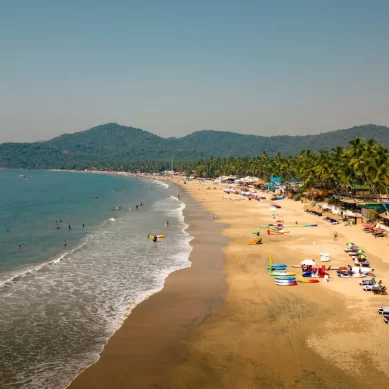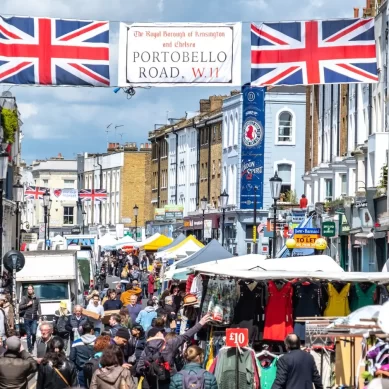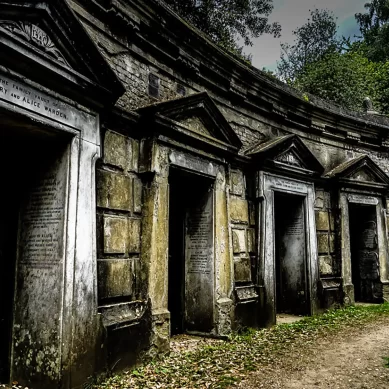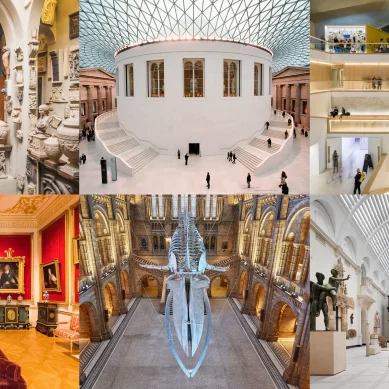
Mahashivaratri the “Great Night of Shiva,” is a significant Hindu festival that takes place every year on the 14th night of the dark fortnight of Phalgun (February or March). This religious ceremony honours Lord Shiva, the main god known as the destroyer and transformer. The night represents Shiva and Goddess Parvati’s celestial union, embodying the balance of male and female energies, creation, and cosmic harmony. Devotees all across the world perform complicated rites, fast, and devote themselves unconditionally going to temples for spiritual experiences.
Mahashivaratri, based on Hindu mythology, celebrates Shiva and Parvati’s heavenly marriage. Beyond religious ceremonies, it includes a cultural festival that provides a profound insight into Hindu spirituality. From the spiritual awakening in the air to the cultural celebrations, Shiva Ratri is a symbolic thought of Lord Shiva’s eternal dance of creation and destruction, emphasising the night’s timeless significance.
Why is Maha Shivrati Celebrated?
This sacred occasion celebrates the anniversary of Lord Shiva and Goddess Parvati’s heavenly marriage, which represents the heavenly union of cosmic forces and the balance of masculine and feminine energy.
According to Hindu mythology, Maha Shivratri is the night when Lord Shiva performed the cosmic dance of creation, preservation, and destruction, also known as the Tandava. Followers believe that prayers and offerings made to Lord Shiva on this holy night draw the most benefits and divine favour as cosmic energy reaches its highest point.

Image source: Pinterest
How to Celebrate Mahashivratri?
India, known for its colourful festivities, takes on a special aura during Maha Shivratri. This observance differs from other celebrations in that it emphasises peacefully, self-reflection, and meditation. Throughout the night, believers participate in acts of devotion, meditation, and complex rituals. Temples dedicated to Lord Shiva are decorated with colourful flowers and illuminations, creating a very mystical ambience. worship of Lord Shiva.
Maha Shivratri Shahi Snan at Magh Mela
Magh Mela takes place this year in Prayagraj, Allahabad. people can participate in the Mahashivratri Sahi Snan on March 8, 2024. Many devotees consider visiting Prayagraj during the Magh Mela and participating in the Mahashivratri Sahi Snan to be an unforgettable experience.

Image Source :Pinterest
Where is Maha Shivaratri celebrated in India?
Mahashivratri is celebrated throughout India, hence the holiday is not limited to a certain location or region. However, there are a few prominent Shiva temples and places in India where devotees can worship Lord Shiva in an energetic and devotional setting. Here are the best 8 places in India where you may celebrate Mahashivaratri and experience divinity.
1.Nilkanth Mahadev Temple, Haridwar, Uttarakhand
Neelkanth Mahadev Temple, located in Haridwar, Uttarakhand, is an admired Hindu sanctuary hidden in the beautiful Garhwal Himalayas. Dedicated to Lord Shiva, the temple is well-known for its spiritual significance and beautiful architectural design. Pilgrims and devotees gathered at this sacred spot, particularly during festivals like Mahashivratri, to seek blessings and a glimpse of the adored deity. The temple is positioned at an altitude, providing stunning views of the surrounding mountains. Its calm ambience and spiritual aura appeal to both seekers of solace and religious devotees. The visit to Neelkanth Mahadev Temple is more than just a pilgrimage; it is a soul-stirring experience in the embrace of nature.

Image Source :Outlook India
View this post on Instagram
2.Umananda Temple, Guwahati, Assam
Umananda Temple, located on Peacock Island in the Brahmaputra River, is a significant Hindu site in Guwahati, Assam. Dedicated to Lord Shiva, it attracts both pilgrims and tourists. The island’s tranquillity and the temple’s historical significance make it a popular trip, providing spiritual peace amidst Assam’s natural splendour.

Image source: outlook India
3 . Matangeshwar Temple, Khajuraho, Madhya Pradesh
Maha Shivratri is celebrated with great splendor and dedication. People take a dip in the Sagar tank along with a large number of people visiting the Matangeshwar Temple for the 10 days long fair. This fair is been visited by people from all age-groups, who come to offer prayers and strive for blessings from Shiva for prosperity.

Image Source: wikipedia
View this post on Instagram
4 .Mahakaleshwar Temple, Ujjain, Madhya Pradesh
Mahakaleshwar Temple in Ujjain, Madhya Pradesh, is one of the 12 Jyotirlingas and a significant Hindu pilgrimage site. Dedicated to Lord Shiva, it features the unique Bhasma Aarti, in which sacred ash is applied to worshippers. The temple’s old architecture and spiritual aura draw millions of visitors, making it a sacred site in Hinduism.

Image source: Pinterest
5.Bhootnath Temple, Mandi, Himachal Pradesh
Bhootnath Temple, in Mandi, Himachal Pradesh, is both an architectural marvel and a spiritual retreat. It is dedicated to Lord Shiva and features outstanding wooden carvings and craftsmanship. The temple, which overlooks the lovely town and the Beas River, provides a peaceful setting for believers. Festivals such as Shivratri are celebrated here in magnificent style, bringing pilgrims from all over. The temple’s historical significance blends with Mandi’s cultural history, adding to its attractiveness. Surrounded by verdant hills, Bhootnath Temple welcomes both religious and architectural enthusiasts, offering a calm respite in the Himalayan scenery of Himachal Pradesh.

Image Source: Indian Outlook
6.Shree Somnath Jyotirlinga Temple in Veraval, Gujarat.
Shree Somnath Jyotirlinga Temple is one of Lord Shiva’s twelve Jyotirlinga Shrines. It is located in Gujarat’s Saurashtra area. During the Maha Shivratri festival, the Somanath mandir is decked with LED lights and numerous flowers.
Thousands of devotees come here during this sacred holiday. A large LED is exhibited in the Somanath temple, allowing visitors to do live darshan and Shiva pujas. The priests of the Somanath temple perform Shiv Ling abhisheka using milk, honey, sugar, ghee, yoghurt, and water. The sound of the temple and the Aum Namah Shivaya Scream creates a spiritual mood.

Image source: Pinterest
7.Isha Yoga Centre in Coimbatore, Tamil Nadu
Isha Yoga Centre in Coimbatore, Tamil Nadu, was bulid by Sadhguru Jaggi Vasudev as a spiritual refuge. It covers 150 acres and includes the Dhyanalinga, a unique contemplative environment, as well as the Adiyogi Shiva monument, which is one of the world’s highest. The centre encourages well-being and inner change through its numerous yoga programmes and retreats. Dhyana Linga, a sacred energy centre, draws seekers from all over the world. The verdant surroundings and sophisticated architecture make it an ideal setting for spiritual practices. Isha Yoga Centre is a bustling hub for spiritual study, encouraging a balanced approach to life via yoga, meditation, and environmental consciousness.

Image source: Pinterest
View this post on Instagram
8.Lokanatha Temple, Puri, Odisha
Lokanatha Temple, located in Puri, Odisha, is a famous Hindu shrine devoted to Lord Shiva. It’s said to be the location where Lord Shiva received the ashes of Lord Buddha’s body. The temple’s architecture displays Odisha’s rich tradition, with elaborate carvings and sculptures. During festivals like Shivaratri, devotees flock to seek blessings and take part in vivid celebrations. The peaceful Bindu Sagar pond close enhances the spiritual atmosphere. Lokanatha Temple is historically and culturally significant, attracting pilgrims and history buffs to experience the heavenly aura and architectural splendor of this respected landmark in Odisha.

Image source: Pinterest
In conclusion, Mahashivratri, Lord Shiva’s glorious night, transcends religious barriers, representing a universal celebration of spirituality and rejuvenation. This important Hindu festival, celebrated with fasting, prayer, and devotion, serves as a powerful reminder of inner strength, tenacity, and the triumph of good over evil. Beyond its religious setting, Mahashivratri brings communities together, instilling a sense of belonging and reverence for the holy. The festival’s cultural diversity, colorful traditions, and spiritual significance of remaining awake all night serve as a timeless reminder to awaken the inner self and embrace the transformational power of religion and dedication.
BY:Glana Nikitha Rodrigues








